Table Of Contents:
- Understanding the Core Principles of Room Layout Design
- Assessing Your Space for Optimal Layout Planning
- Selecting the Right Furniture to Complement Your Layout
- Selecting the Right Furniture to Complement Your Layout
- Strategic Placement for Maximum Impact
- Enhancing Your Space With Color, Texture, and Lighting
- Adapting Design Principles to Different Room Types
- Adapting Design Principles to Different Room Types
Are you struggling to create a harmonious room layout that flows and feels inviting? Understanding room layout design principles is essential to transforming your space into a functional and aesthetically pleasing environment. In this post, I’ll cover core concepts like symmetry and the golden ratio, as well as how to select the right desk for your living room. You’ll gain practical tips to enhance energy and improve your overall design. Let’s tackle the challenge of optimizing your space together, ensuring it meets your needs and reflects your style.
Understanding the Core Principles of Room Layout Design
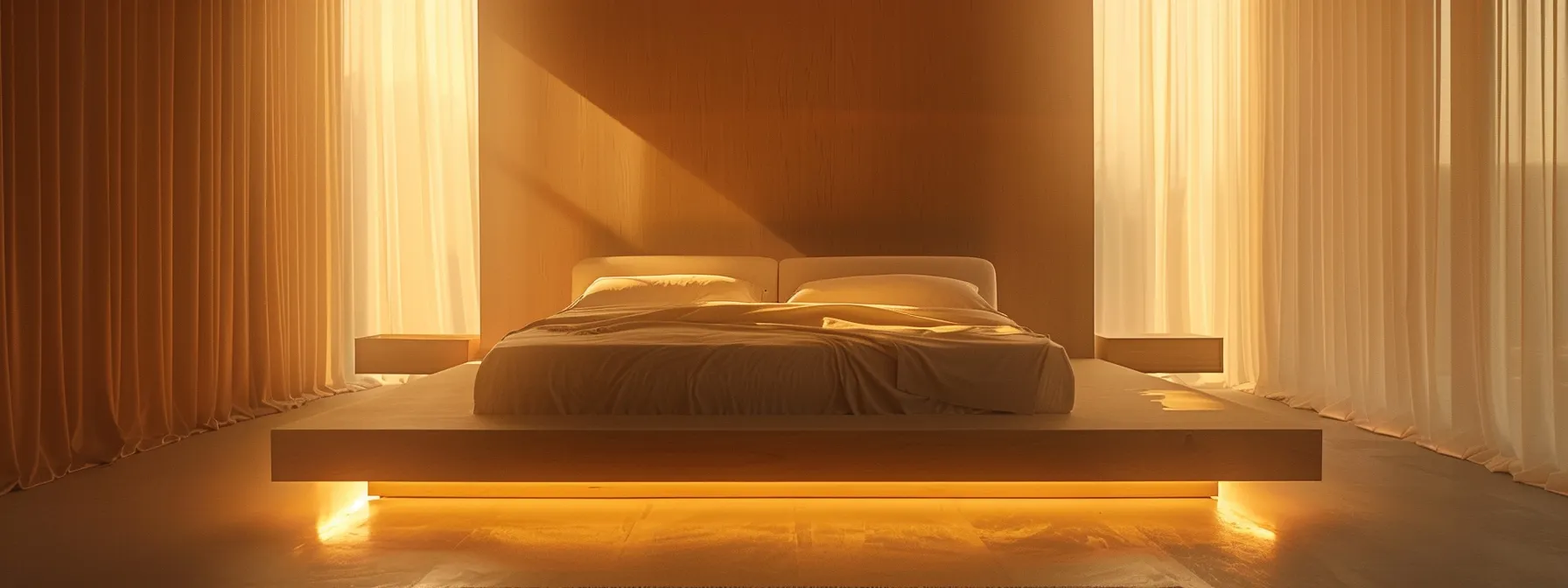
In room layout design, I prioritize understanding the purpose of each space, ensuring that every element, from the architecture to the placement of the carpet, serves its intended function. I balance proportion and scale, considering the role of symmetry and asymmetry in creating visually appealing arrangements. Additionally, I utilize negative space to enhance the room‘s dimensions, allowing features like the headboard and ceiling to shine while maintaining a cohesive flow.
Recognizing the Purpose of Each Space
When I approach room layout design, recognizing the purpose of each space is fundamental. For example, in a living room, I ensure that a console table is placed strategically to facilitate easy traffic flow and enhance perception. I also consider elements like shelving units and dimmers to create the right ambiance while ensuring that the layout supports the intended functions, such as socializing or relaxation.
| Element | Purpose | Impact on Space |
|---|---|---|
| Console Table | Enhances entryway function | Improves traffic flow and accessibility |
| Shelf | Provides storage and decor | Utilizes vertical space effectively |
| Dimmer | Controls lighting levels | Adjusts ambiance for different activities |
Balancing Proportion and Scale in Design
Balancing proportion and scale is crucial when creating a floor plan that promotes harmony within an open plan concept. I focus on the ratio of each element in relation to others, ensuring that furniture pieces complement rather than overwhelm the space. For example, selecting appropriately sized sofas for a large living area can create a welcoming environment while maintaining the overall aesthetic balance you desire.
| Element | Proportion Consideration | Scale Impact |
|---|---|---|
| Sofas | Size in relation to room dimensions | Enhances comfort and accessibility |
| Lighting Fixtures | Adjusting height for visual balance | Creates focal points within the layout |
| Artwork | Ratio to wall space | Influences perceived room size |
The Role of Symmetry and Asymmetry
The role of symmetry and asymmetry in room layout design is essential for creating a balanced and inviting space. I often utilize symmetry to establish a sense of order and tranquility, which is particularly beneficial in design practices like feng shui that advocate for harmonious living environments. Conversely, I embrace asymmetry to infuse creativity into a room, using strategically placed elements like a statement light fixture or an art piece near a door, drawing attention and enhancing the overall aesthetic without compromising functionality.
Utilizing Negative Space Effectively
Utilizing negative space effectively is a cornerstone of room layout design that I focus on to elevate any environment, be it a cozy bedroom or a stylish dining room. By intentionally leaving areas open, I allow the elements, such as a beautifully crafted wood loveseat or an elegant table, to draw the eye and create a sense of balance. For instance, ensuring there’s enough space around the length of furniture pieces can enhance flow and accessibility, making the room more inviting and functional.
Now that we grasp the principles of room layout design, it’s essential to take a hard look at the space around us. Doing so will guide us toward the best layout for our unique needs and desires.
Assessing Your Space for Optimal Layout Planning
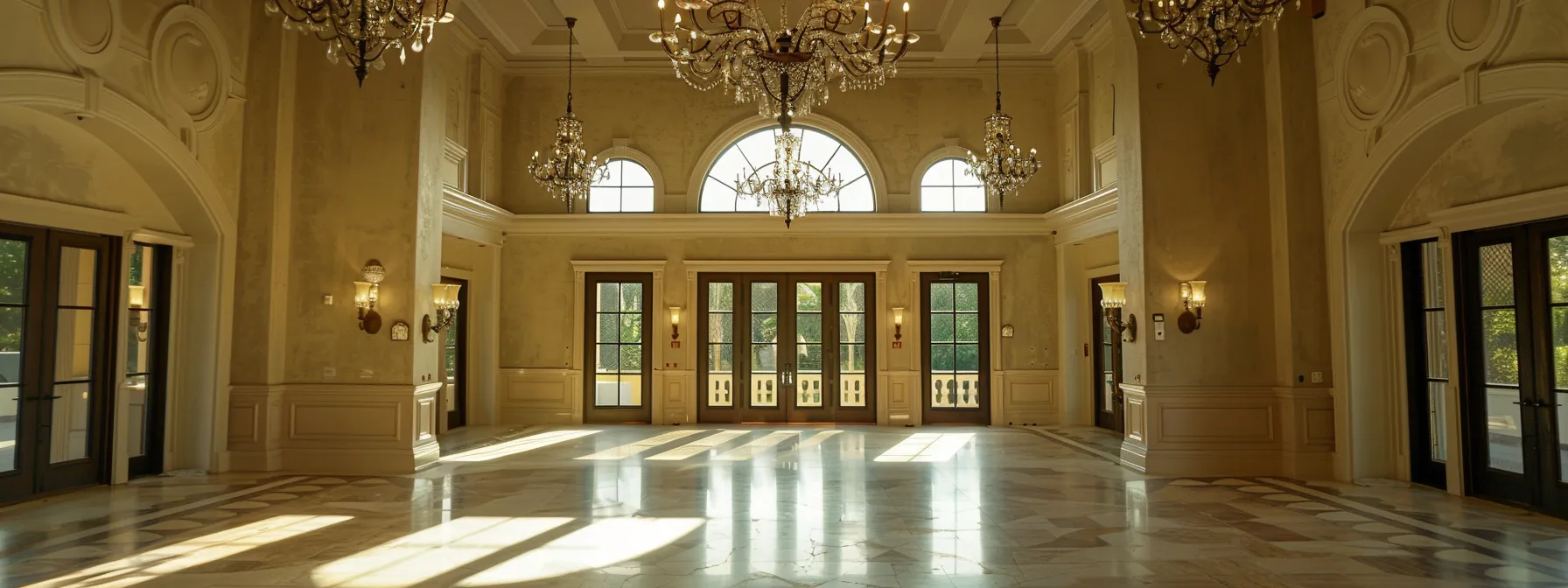
Accurate measurement of your room is the first step for effective layout planning. I focus on identifying architectural features and limitations that can influence design decisions. Analyzing natural light sources is equally important, as it impacts both ambiance and functionality. Finally, I consider traffic flow and movement patterns to ensure a harmonious space that draws attention to elements like sconces and chandeliers.
Measuring Your Room Accurately
Accurate measurements of your room are essential for effective interior design, especially when planning for key elements like the placement of chairs, a fireplace, or other focal points. I start by measuring the height, width, and depth of each wall, ensuring that I also account for any architectural features such as windows and doorways that might affect accessibility. By taking these measurements into consideration, I can create a layout that encourages conversation and interaction, making your space both functional and inviting.
- Measure the height, width, and depth of walls
- Account for architectural features like windows and doors
- Plan for essential elements such as chairs and fireplaces
- Ensure ease of accessibility in your layout
- Create a layout that enhances conversation and social interaction
Identifying Architectural Features and Limitations
Identifying architectural features and limitations is crucial when planning your room layout. For instance, the height of a bookcase can affect the flow and visual balance in a room, particularly in relation to surrounding furniture like a sofa. Additionally, assessing sources of sunlight will help me determine optimal furniture placement, such as leaving enough space behind the sofa for warmth and light to illuminate the area effectively, creating an inviting atmosphere.
Analyzing Natural Light Sources
When I analyze natural light sources in a space, I focus on how sunlight enters through the roof and windows, greatly influencing the overall ambiance. Natural light not only highlights the bathroom‘s decor but also enhances the effectiveness of a minimalist approach, creating an inviting area where functionality meets aesthetics. Understanding the patterns of light throughout the day helps me position furniture and decorative arts thoughtfully, ensuring that the brightness complements the design while keeping the space visually balanced.
| Element | Impact of Natural Light | Design Strategy |
|---|---|---|
| Roof Design | Maximizes daylight entry | Incorporate skylights |
| Windows | Enhances mood and atmosphere | Use sheer curtains for diffusion |
| Room Orientation | Determines light intensity | Position furnishings accordingly |
Considering Traffic Flow and Movement Patterns
When considering traffic flow and movement patterns in a room, I prioritize the arrangement of furniture and fixtures to enhance accessibility and ease of movement. For example, in a kitchen layout, it’s crucial to position the sink, stove, and refrigerator in a way that minimizes walking distance, often referred to as the kitchen work triangle. To optimize space effectively, I also consider how guests will navigate the floor without obstruction, ensuring that pathways enhance interaction rather than hinder it. Visit the YOLO Interiors Website for innovative design ideas, and use Google Maps Location insights to understand spatial dynamics in your neighborhood:
- Analyze natural paths people follow within the room.
- Arrange furniture to create unobstructed pathways.
- Prioritize the placement of key features like sinks for functionality.
- Maximize open spaces for movement and comfort.
Once you’ve assessed your space, it’s time to think about the furniture. The right pieces will not only fit your layout but also breathe life into your vision.
Selecting the Right Furniture to Complement Your Layout
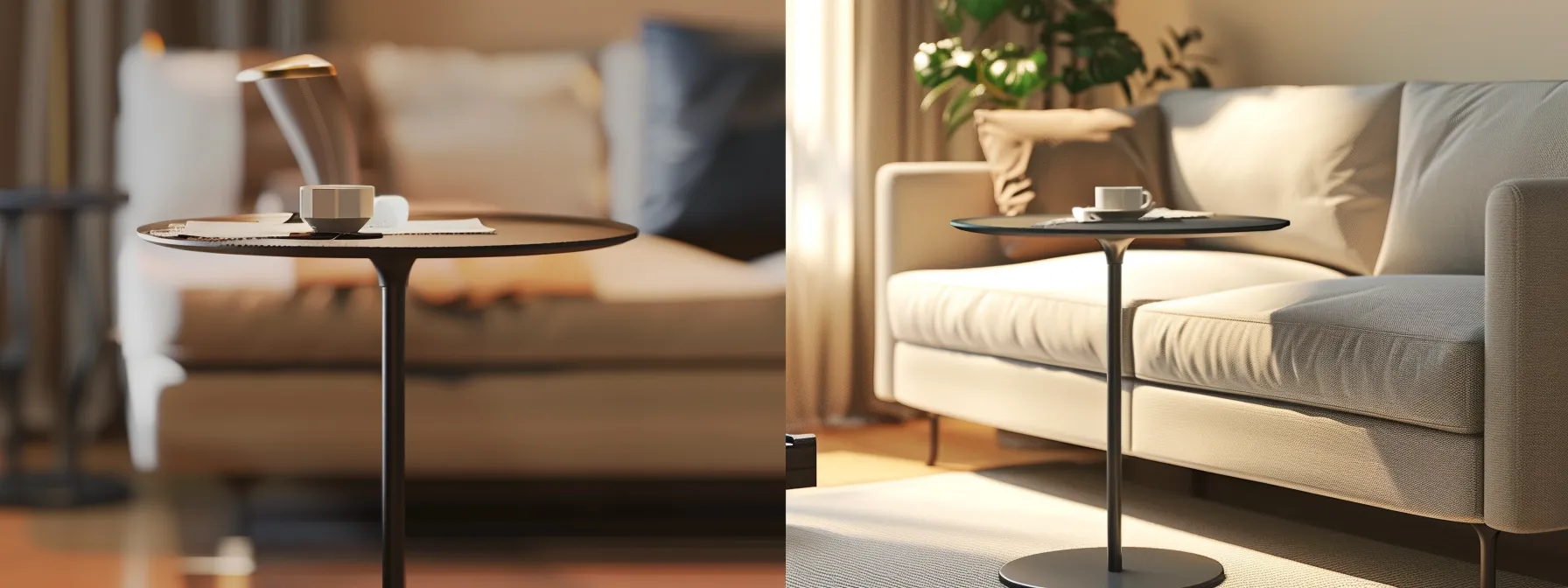
Selecting the Right Furniture to Complement Your Layout
Choosing furniture that fits your space appropriately is crucial for achieving a harmonious layout. I focus on mixing and matching styles cohesively while prioritizing functionality without sacrificing aesthetics. Incorporating multipurpose furniture, such as metal accent tables or convertible sofas, adds versatility to your design, making it both practical and visually appealing.
Choosing Pieces That Fit the Space Appropriately
When choosing pieces that fit your space appropriately, I focus on both functionality and aesthetics to create a cohesive room layout. It’s essential to select furniture that complements the scale and proportion of your space; for instance, oversized sofas in a small living room can overwhelm the area, while compact options enhance flow and accessibility. I recommend measuring your space accurately and visualizing how each piece will interact with the overall design to ensure an inviting and well-balanced environment.
Mixing and Matching Styles Cohesively
Mixing and matching styles cohesively is a vital aspect of selecting furniture that enriches your room layout. I focus on creating a balanced look by combining different design elements that share a common thread, whether that’s a color palette, material, or overall vibe. For instance, pairing a contemporary sofa with vintage side tables can create a striking contrast that feels intentional and curated, inviting a dialogue between the past and the present.
- Select a unifying color scheme to tie different styles together.
- Choose complementary materials that harmonize without feeling forced.
- Incorporate statement pieces that reflect personal taste while enhancing aesthetic cohesion.
Prioritizing Functionality Without Sacrificing Aesthetics
In my experience as an interior designer, prioritizing functionality without sacrificing aesthetics is key to creating spaces that are both beautiful and practical. When I select furniture, I aim for pieces that enhance everyday living while contributing to the overall design. For example, choosing a stylish coffee table that also offers storage can keep the space organized and clutter-free, addressing common pain points for homeowners.
| Furniture Element | Functionality | Aesthetic Contribution |
|---|---|---|
| Coffee Table | Offers storage for magazines and remotes | Acts as a stylish centerpiece |
| Convertible Sofa | Serves as a bed for guests | Adds modern flair to the room |
| Accent Chairs | Provides extra seating | Enhances design with pops of color |
Incorporating Multipurpose Furniture
Incorporating multipurpose furniture into your room layout is essential for maximizing both functionality and style. I often recommend pieces like ottomans that serve as both seating and storage, or coffee tables that can transform into desk space. By selecting versatile items, I can create a balanced environment that adapts to the needs of the space and its occupants, addressing common challenges like limited room size or clutter:
- Choose furniture that serves multiple roles, enhancing practicality.
- Opt for stylish storage solutions to maintain a tidy environment.
- Consider convertible options that easily adapt to changing needs.
Choosing furniture is just the beginning. The way you place it can transform a room, creating a space that speaks volumes.
Strategic Placement for Maximum Impact
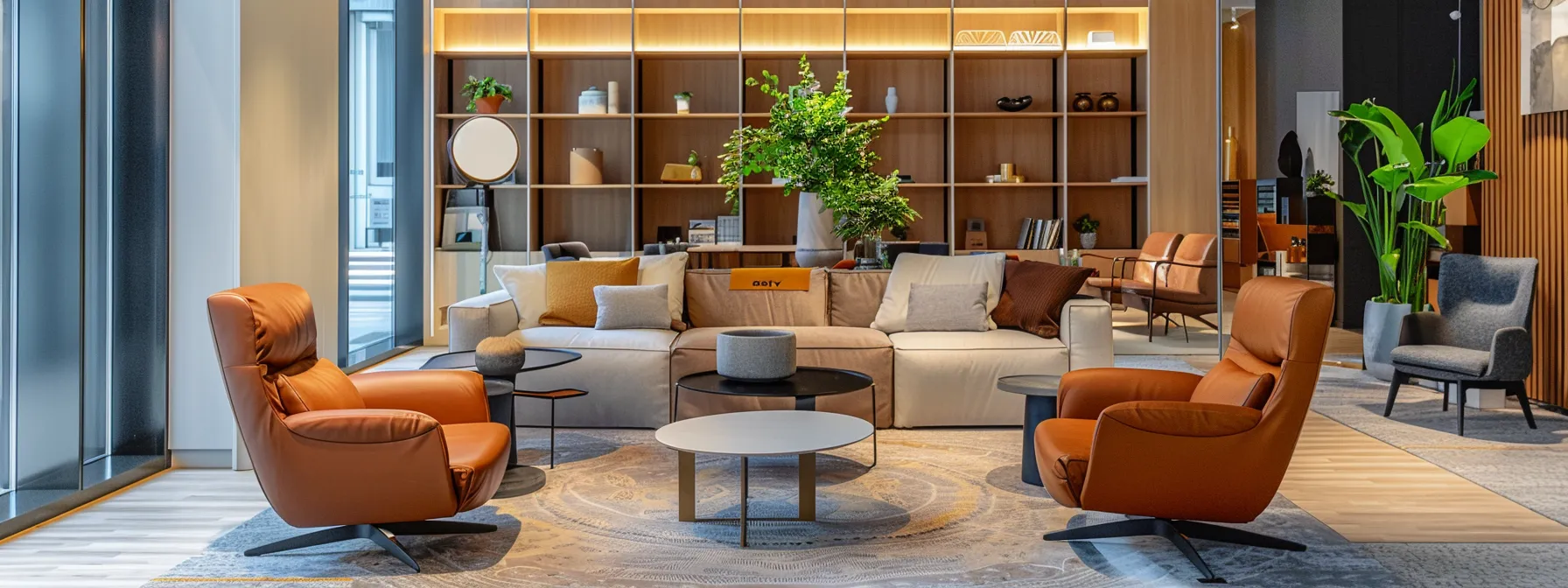
In this section, I focus on strategic placement to create an impactful room layout. First, I will discuss how to create focal points that anchor the room, establishing a design centerpiece. Next, I’ll cover arranging seating for conversation and comfort, ensuring that spaces encourage interaction. I will also explore positioning furniture to enhance flow, making movement effortless. Finally, I’ll explain aligning elements for visual harmony, which ties the overall design together and elevates the space’s appeal.
Creating Focal Points to Anchor the Room
Creating focal points is essential for anchoring a room and guiding the overall design narrative. I often choose elements like a striking piece of artwork, a well-designed fireplace, or a bold piece of furniture to serve as the centerpiece around which the rest of the room revolves. By thoughtfully placing these focal points, I not only draw the eye but also establish visual balance, promoting a cohesive and inviting atmosphere that invites interaction and enhances functionality.
Arranging Seating for Conversation and Comfort
Arranging seating for conversation and comfort is essential in creating a welcoming atmosphere in any room. I prioritize flexibility in seating arrangements, ensuring that chairs and sofas face each other, which encourages engagement and interaction among guests. By keeping pathways clear and allowing enough space between furniture pieces, I ensure that movement flows effortlessly, adding to the overall comfort of the space:
| Seating Element | Arrangement Strategy | Impact on Conversation |
|---|---|---|
| Sofas | Face each other | Encourages dialogue |
| Accent Chairs | Position near sofas | Creates intimacy |
| Coffee Table | Center of seating area | Facilitates interaction |
Positioning Furniture to Enhance Flow
Positioning furniture to enhance flow is essential for creating a space that feels open and inviting. I carefully consider the paths that people naturally move through the room, ensuring that furniture placement allows for easy navigation without obstruction. For instance, I position sofas and chairs in a way that fosters conversation while keeping pathways clear, which not only improves traffic flow but also encourages interaction among guests, making the environment more welcoming and functional.
Aligning Elements for Visual Harmony
Aligning elements for visual harmony is a fundamental aspect of room layout design that enhances the overall aesthetic appeal of a space. I focus on ensuring that furniture, artwork, and decor items are positioned in a way that creates a cohesive look, drawing the eye naturally throughout the room. For example, placing a coordinating area rug under the seating area not only defines the space but also unites various design elements, reinforcing a sense of balance and symmetry:
- Identify key focal points in the room.
- Choose complementary colors and materials for a unified look.
- Position furniture thoughtfully to create visual paths and balance.
- Incorporate decorative accents that echo your main design theme.
The right furniture sets the stage, but color, texture, and lighting bring the scene to life. Discover how these elements can transform your space, adding depth and personality.
Enhancing Your Space With Color, Texture, and Lighting
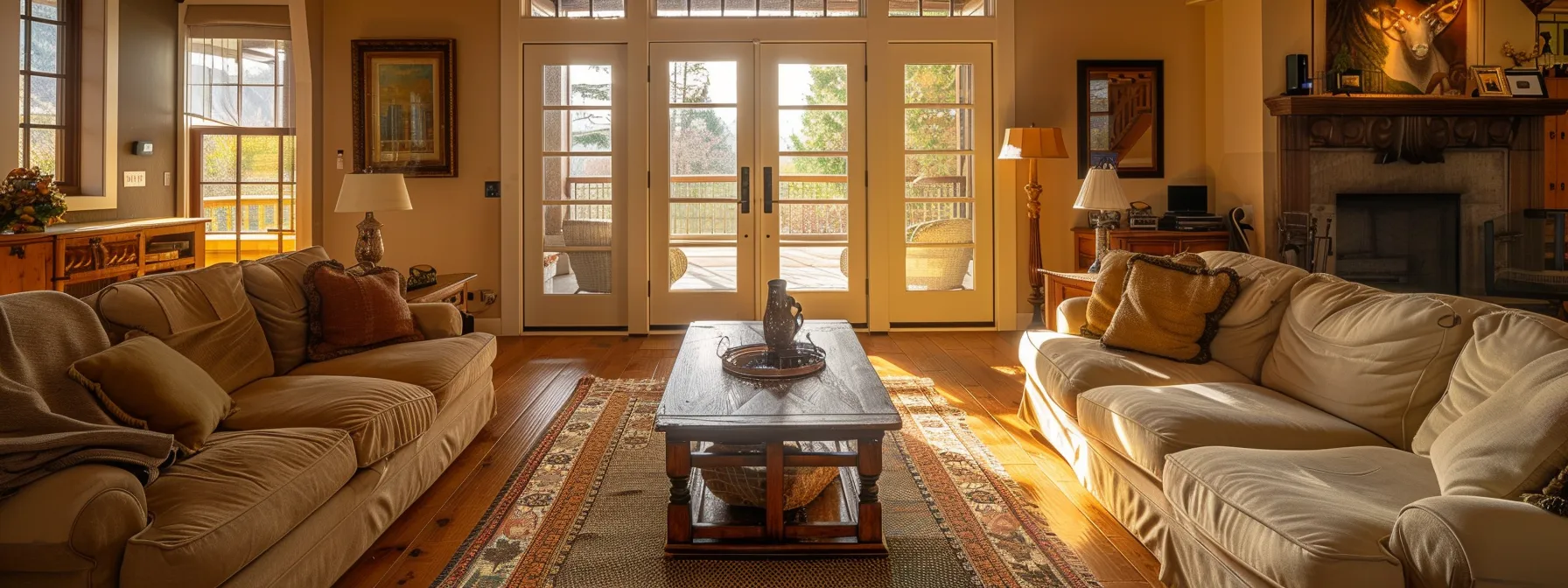
To truly enhance your space, I focus on selecting a cohesive color palette that establishes harmony throughout the room. Layering textures adds depth and interest, making the environment more inviting. Implementing effective lighting solutions is essential for both ambiance and functionality, while accessorizing thoughtfully allows me to reflect personal style and adapt the design to individual tastes.
These elements work together to transform any layout, ensuring that every aspect of your design contributes to a cohesive and inviting atmosphere that meets practical needs and aesthetic desires.
Selecting a Cohesive Color Palette
In selecting a cohesive color palette, I focus on creating a harmonious environment that enhances the overall aesthetic of the space. I often choose three to five colors that reflect the desired mood and atmosphere, ensuring that they complement each other without clashing. For instance, using soft neutrals as a base while adding pops of color through decorative accessories can create visual interest without overwhelming the design. This thoughtful approach to color not only unifies the room but also makes it more inviting, effectively transforming your space into a well-crafted sanctuary.
Layering Textures for Depth and Interest
Layering textures in interior design is vital for adding depth and interest to a space. I often recommend combining materials such as plush fabrics, sleek metals, and natural woods to create a tactile experience that engages the senses. For instance, pairing a soft velvet sofa with a woven throw and a polished wooden coffee table not only creates visual contrast but also invites touch, making the environment feel more welcoming and dynamic.
Implementing Lighting Solutions for Ambiance and Function
When I implement lighting solutions in a room, I focus on creating a balance between ambiance and functionality. A well-designed lighting plan not only enhances the aesthetic appeal of the space but also serves practical purposes. For instance, I strategically place layered lighting options, such as ambient, task, and accent lights, to ensure that every area of the room is illuminated according to its needs, whether it’s brightening a workspace or creating a cozy atmosphere for relaxation.
Accessorizing to Reflect Personal Style
Accessorizing to reflect personal style is a powerful way to infuse character into your space and enhance its overall design. I often suggest selecting unique decorative items that resonate with your interests, such as art pieces, throw pillows, or vintage finds, which can become conversation starters. By curating these accessories thoughtfully, you not only personalize your environment but also create a cohesive look that connects with the chosen color palette and layout, ultimately making your space feel more inviting and authentically yours.
Color, texture, and lighting breathe life into your space, but each room tells its own story. Discover how to adapt design principles to suit the unique character of every room, unlocking its full potential.
Adapting Design Principles to Different Room Types
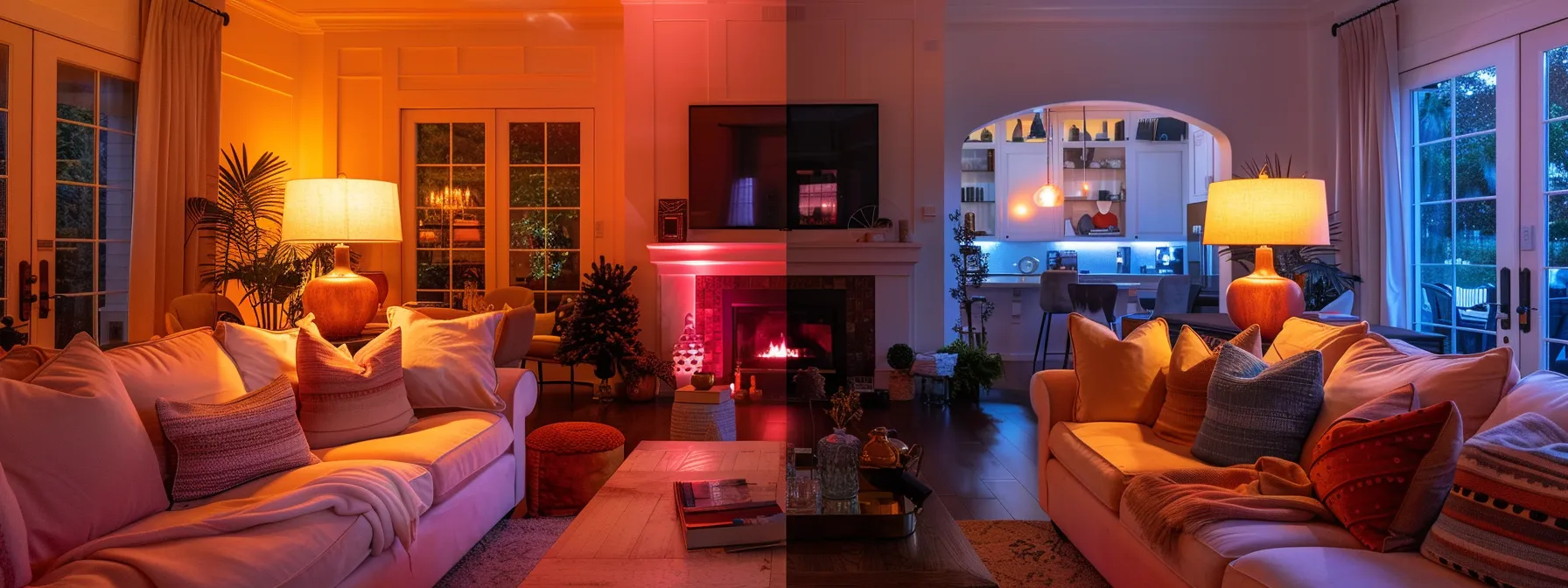
Adapting Design Principles to Different Room Types
In my experience as an interior designer, successfully adapting room layout design principles is essential for creating spaces that meet each room‘s unique needs. For living areas, I focus on fostering social engagement, while in bedrooms, I prioritize rest and relaxation. Kitchens require an emphasis on efficiency and ease, and transforming small spaces demands smart layouts to maximize functionality.
Designing Living Areas for Social Engagement
When designing living areas for social engagement, I prioritize creating inviting spaces that foster interaction and connection among guests. It’s essential to arrange seating to promote conversation, often positioning sofas and chairs in a way that encourages face-to-face dialogue. I also integrate multifunctional furniture, such as ottomans or coffee tables with storage, to keep the area organized and clutter-free, enhancing the overall experience for everyone involved:
- Prioritize flexible seating arrangements.
- Incorporate multifunctional furniture options.
- Maintain clear pathways for easy movement.
- Use lighting to create a warm and inviting atmosphere.
Crafting Bedrooms for Rest and Relaxation
When crafting bedrooms for rest and relaxation, I focus on creating a serene environment that promotes comfort and tranquility. This includes selecting a calming color palette that fosters a peaceful ambiance, as well as arranging furniture to maximize space without feeling cluttered. For instance, placing a plush bed central to the room with bedside tables ensures easy access while creating a cozy retreat, making it an inviting space for unwinding after a long day.
Optimizing Kitchens for Efficiency and Ease
When optimizing kitchens for efficiency and ease, I focus on the kitchen work triangle—the optimal placement of the sink, stove, and refrigerator—to minimize movement and streamline cooking tasks. By ensuring that these essential elements are within easy reach, I create a functional layout that enhances daily meal preparation and fosters a welcoming environment for gatherings. For instance, I often recommend incorporating ample counter space and smart storage solutions, like pull-out pantry shelves, to facilitate seamless organization and accessibility, ultimately transforming the kitchen into a space where cooking becomes a delightful experience rather than a chore.
Transforming Small Spaces With Smart Layouts
Transforming small spaces requires a strategic approach in room layout design to maximize functionality and comfort. I focus on using multipurpose furniture, such as a sofa bed or a nesting table, that can adapt to your needs without crowding the area. Additionally, I implement vertical storage solutions, like wall-mounted shelves, to free up floor space and create an open feel, making even the coziest areas feel inviting and efficient:
- Utilize multipurpose furniture for flexible use.
- Incorporate vertical storage to maximize space.
- Ensure clear pathways to enhance movement.

